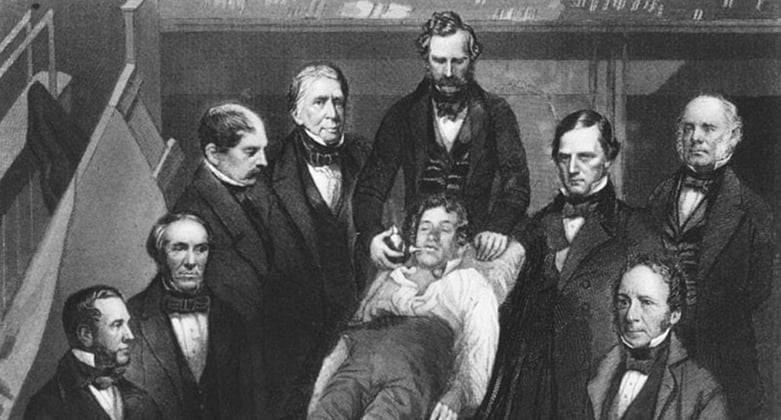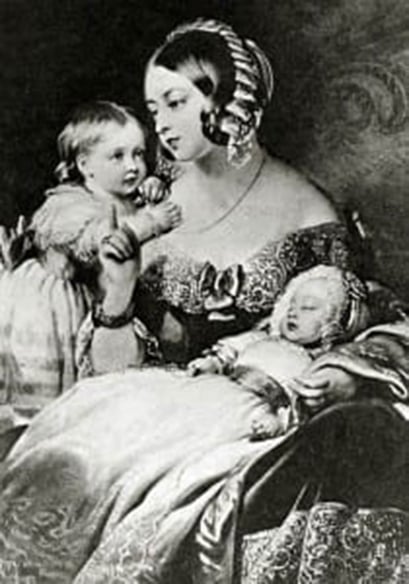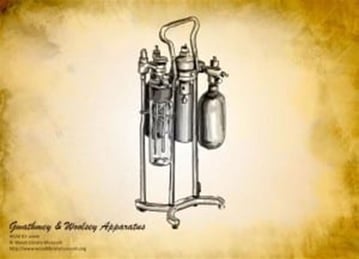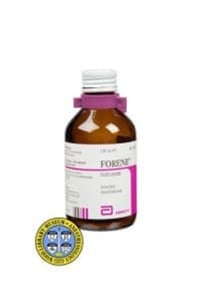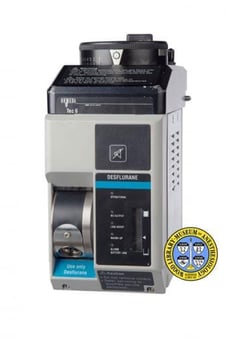Modern medicine would not be possible without anesthesia. An early form of anesthesia was first used at Massachusetts General Hospital in Boston by dentist William T.G. Morton and surgeon John Warren on October 16, 1846.
In the latest installment of our Medical Milestones series, the UMHS Endeavour takes a look back at the history of anesthesia for future doctors at American and Caribbean medical schools We will include information from an article by Dr. Howard Markel on PBS.org and Wood Library Museum.org and other sources. Also look for upcoming posts about anesthesia on “Throwback Thursdays” on the UMHS Facebook page.
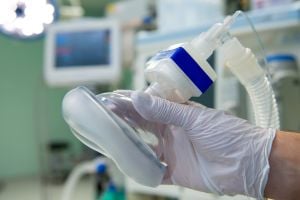 At-a-glance
At-a-glance
Free guide
Anesthesiology: Is it the right specialty for you?
- Scope of Practice
- Subspecialties
- Future Job Outlook
Quick access. No spam. 10 pages.
Early anesthesia can be traced back to ancient times (Babylonians, Greeks, Chinese and Incas), but one of the first European accounts occurred in the 1200s when Theodoric of Lucca, an Italian physician and bishop, "used sponges soaked with opium and mandragora [from the mandrake plant] for surgical pain relief," according to Britain's History of Anesthesia Society (www.histansoc.org.uk/). Hashish and Indian hemp were also commonly used as painkillers.
Up until the mid-1800s, however, surgeons could not offer patients much more than opium, alcohol or a bullet to bite on to deal with the agonizing pain of surgery. Britain’s Daily Mail describes medicine during the U.S. Civil War as a grisly ordeal. “A blood-curdling range of saws, knives and sharp hooks were used to administer much-needed surgery to maimed fighters,” the paper wrote back in 2011. “But rather than being comfortably anesthetized, the soldiers had to grit their teeth through the pain of having their limbs amputated”.
Medicine was still primitive during the Civil War (1861-1865), but in the 1840s and 1850s, American doctors were working hard to develop anesthesia
First Surgical Procedure Using Anesthesia
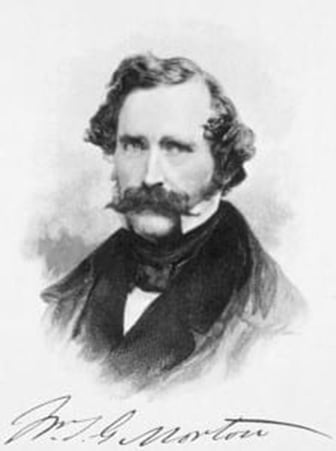 On October 16, 1846, Boston dentist William T.G. Morton used sulfuric ether to anesthetize a man who needed surgery to remove a vascular tumor from his neck, according to “The Painful Story Behind Modern Anesthesia” by Dr. Howard Markel on PBS.org.
On October 16, 1846, Boston dentist William T.G. Morton used sulfuric ether to anesthetize a man who needed surgery to remove a vascular tumor from his neck, according to “The Painful Story Behind Modern Anesthesia” by Dr. Howard Markel on PBS.org.
Surgeon John Warren performed the procedure on patient Glenn Abbott.
William T.G. Morton called his creation Letheon, named after the Lethe River of Greek mythology, noted for its waters that helped erase “painful memories.”
Morton started buying ether from a local chemist and “began exposing himself and a menagerie of pets to ether fumes. Satisfied with its safety and reliability, he began using ether on his dental patients,” Dr. Howard Markel writes on PBS.org. “Soon, mobs of tooth-aching, dollar-waving Bostonians made their way to his office. Morton relished his financial success but quickly perceived that Letheon was good for far more than pulling teeth.”
Historical accounts say Morton hoped to make a fortune off his “discovery,” but he ran into many snags before and afterward. Morton worked with another dentist, Horace Wells. In 1845, just one year before the first successful surgery with anesthesia, Morton and Wells had been experimenting with nitrous oxide (“laughing gas”). During one infamous demonstration at Harvard Medical School in 1845, the two dentists failed at deadening the pain of a subject having a tooth pulled, causing major humiliation for both men.
In 1844, Morton had been listening to lectures of Harvard chemistry professor Charles Jackson about how the organic solvent sulfuric ether “could render a person unconscious or even insensate,” as PBS.org explains.
(Photo, inset right) WILLIAM T.G. MORTON: Boston dentist helped perform first surgery using an anesthetic. Photo: Wikimedia Commons
Timeline for History of Anesthesia
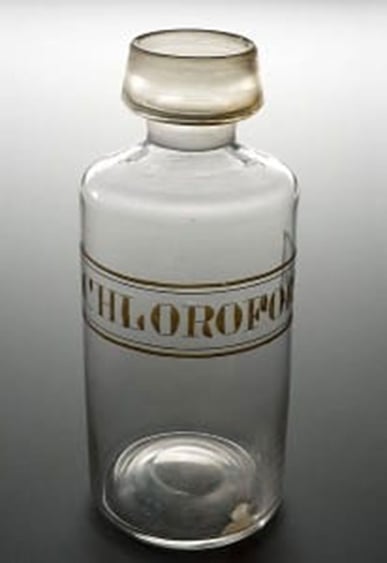
CHOLOROFORM: Clear glass shop round for Chloroform, United Kingdom, 1850. Photo: Wikimedia Commons
Below are facts from the website for the Wood Library Museum of Anesthesia in Schaumburg, Illinois. Visit the Wood Library Museum of Anesthesia website for more in-depth history. Please note this timeline only includes events after the first surgical procedure using anesthesia in 1846. Refer to the museum’s website for earlier developments in anesthesia going back to 4,000 BCE.
1847
In Scotland in 1847, obstetrician Professor James Y. Simpson starts giving women chloroform to ease the pain of childbirth “Chloroform quickly becomes a popular anesthetic for surgery and dental procedures as well,” the museum website says. “Chloroform was discovered independently in 1831 by the USA's Samuel Guthrie, France's Eugène Soubeiran, and Germany's Justus von Liebig.”
1853
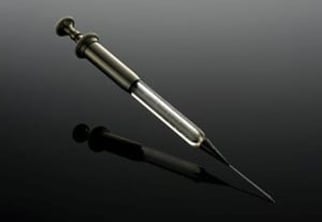
HOLLOW HYPODERMIC SYRINGE: Used in England, circa 1850s. Photo: Wikimedia Commons
Drs. Charles Pravaz (1791-1853) and Alexander Wood (1817-1884) “independently invented the hollow hypodermic needle, which will be attached to an earlier invention, the syringe popularized in 1845 by Ireland's Francis Rynd.”
1853 & 1857
CHLOROFORM USED AS ANESTHETIC FOR QUEEN VICTORIA: Chloroform was used on Britain's Queen Victoria when she gave birth to Prince Leopold in 1853 & Princess Beatrice in 1857. Photo: Wikimedia Commons
“Dr. John Snow (1813-1858)-A full-time anesthetist since 1847, Dr. Snow popularizes obstetric anesthesia by chloroforming Queen Victoria for the birth of Prince Leopold (1853) and Princess Beatrice (1857).” His books On the Inhalation of the Vapour of Ether and On Chloroform and Other Anaesthetics enlightened physician-anesthetists. His sourcing of the 1854 London cholera epidemic to the Broad Street water pump founded epidemiology.”
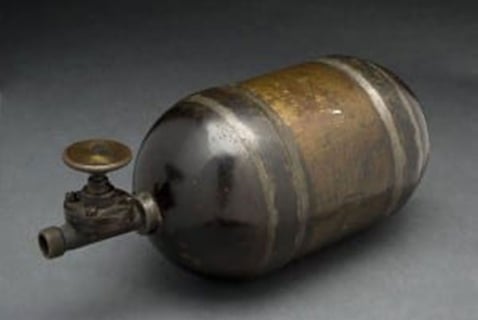
NITROUS OXIDE CYLINDER: Used in Europe in the 1800s. Photo: Wikimedia Commons
1863
"’Professor’ Gardner Quincy Colton (1814-1898) of the Cooper Institute in New York reintroduces nitrous oxide.”
1856
“Dr. Edmund Andrews (1824-1904) of Chicago proposes using nitrous oxide mixed with oxygen as an anesthetic in the Chicago Medical Examiner.”
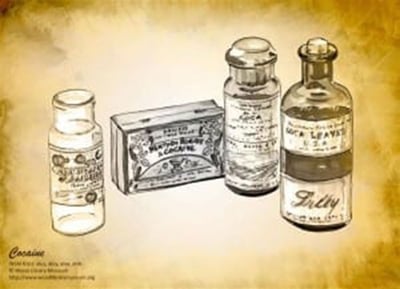 1884
1884
“Dr. Karl Koller (1857-1944)-Viennese ophthalmologist and colleague of Sigmund Freud, introduces cocaine as an anesthetic for eye surgery.”
"Dr. William S. Halsted uses cocaine (1852-1922) for the first regional (mandibular or jaw) nerve block with cocaine."
(Photo, inset right) COCAINE: (Left to right) 'A bottle for Boehringer Muriate of Cocaine, a tin for menthol and cocaine throat lozenges, a bottle for powdered cocaine manufactured by Park, Davis & Co., & a glass bottle for fluid extract of cocaine manufactured by Eli Lilly and Co.' Photo: © Wood Library-Museum. www.WoodLibraryMuseum.org
1889
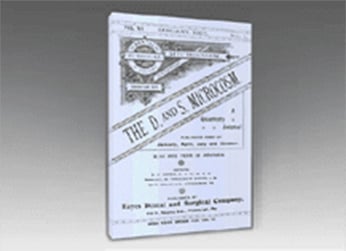 At the Philadelphia College of Dentistry, Henry I. Dorr, MD, DDS was appointed as the world's first Professor of the Practice of Dentistry, Anesthetics and Anesthesia. "The world's first unidisciplinary 'Professors of Anesthesia' will follow in dentistry at Chicago's American College of Dental Surgery (1892, George Leininger, MD) and in medicine at the New York Homeopathic Medical College (1903, T. Drysdale Buchanan, MD)."
At the Philadelphia College of Dentistry, Henry I. Dorr, MD, DDS was appointed as the world's first Professor of the Practice of Dentistry, Anesthetics and Anesthesia. "The world's first unidisciplinary 'Professors of Anesthesia' will follow in dentistry at Chicago's American College of Dental Surgery (1892, George Leininger, MD) and in medicine at the New York Homeopathic Medical College (1903, T. Drysdale Buchanan, MD)."
(Photo, inset right) DENTAL & SURGICAL MICROCOSM: The final issue. Photo: © Wood Library-Museum. www.WoodLibraryMuseum.org
1891
In Pittsburgh, Pennsylvania, “The Dental and Surgical Microcosm is published as the world's first journal ‘devoted chiefly to the science of Anesthesia and Anesthetics.’ "
1893
The London Society of Anaesthetists, “the world's first anesthesia society,” forms in London, United Kingdom.
1894
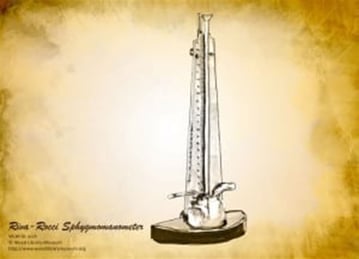 “Medical students E. Amory Codman (1869-1940) and Harvey Cushing (1869-1939)-develop the first anesthesia record using observed respiratory rate and palpated pulse rate. By 1901, Cushing will add blood pressure measurement by Riva Rocci sphygmomanometry; by 1903, respiratory rate and heart rate as auscultated by precordial stethoscope (use of which was pioneered by Cushing on dogs and by his favorite physician-anesthetist, S. Griffith Davis, on patients).”
“Medical students E. Amory Codman (1869-1940) and Harvey Cushing (1869-1939)-develop the first anesthesia record using observed respiratory rate and palpated pulse rate. By 1901, Cushing will add blood pressure measurement by Riva Rocci sphygmomanometry; by 1903, respiratory rate and heart rate as auscultated by precordial stethoscope (use of which was pioneered by Cushing on dogs and by his favorite physician-anesthetist, S. Griffith Davis, on patients).”
(Photo, inset right) RIVA-ROCCI SPHYGMOMANOMETER: First used circa 1901. Photo: © Wood Library-Museum. www.WoodLibraryMuseum.org
1898
“Dr. August Bier (1861-1949)-Conducts the first spinal anesthetic using cocaine; 10 years later, he popularized the intravenous regional ("Bier") block.”
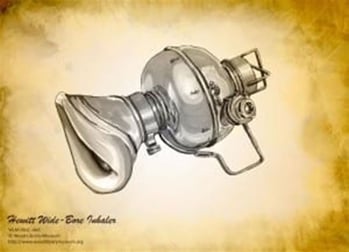 1901
1901
“Caudal epidural analgesia is described independently by France's Drs. Jean-Anthanase Sicard and Fernand Cathelin. Their innovation comes after an inadvertent epidural injection by Dr. J. Leonard Corning (1855-1923)."
(Photo, inset right) HEWITT WIDE-BORE INHALER: Developed by Dr. Frederick William Hewitt of the U.K., it was a modification of the earlier Clover Ether Inhaler. Unlike the Clover, this one can be refilled with ether while still in use. Dr. Hewitt's 'oral airway' is introduced in 1908. Photo: © Wood Library-Museum. www.WoodLibraryMuseum.org
1902
"Dr. Mathias J. Seifert of Chicago coins the words 'anesthesiology' and 'anesthesiologist.' He asserted that an 'anesthetist' is a technician and an 'anesthesiologist' is the scientific authority on anesthesia and anesthetics.
1905
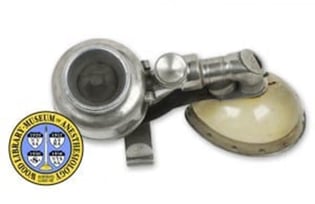 “Dr. Frederic W. Hewitt administers a chloroform-ether mixture to the future King Edward VII. Perhaps tugging on the portly prince's beard (to keep the royal airway open) inspired Hewitt by 1908 to design his oral 'air-way.' "
“Dr. Frederic W. Hewitt administers a chloroform-ether mixture to the future King Edward VII. Perhaps tugging on the portly prince's beard (to keep the royal airway open) inspired Hewitt by 1908 to design his oral 'air-way.' "
(Photo, inset right) THE DAVIS INHALER: One of several devices invented by Dr. S. Griffith Davis. Introduced around 1913, the Davis Inhaler 'delivered a combination of nitrous oxide, oxygen & ether.' Photo: © Wood Library-Museum. www.WoodLibraryMuseum.org
1907
“Dr. A. Frederick Erdmann (1867-1953)-Founds the Long Island Society of Anesthetists (LISA), the first professional anesthesia society in the USA. (LISA membership starts as 9 total).”
1911
“The Long Island Society is renamed the New York Society of Anesthetists (NYSA). (NYSA membership reaches 23 in 1911.)”.
1914
“The first of two editions of Anesthesia, the USA's first such comprehensive textbook, is published by Dr. James T. Gwathmey, the 1912 NYSA President.”
“Dr. Dennis E. Jackson develops a carbon dioxide (CO2) absorbing anesthesia system, allowing for a patient to re-breathe their exhaled air containing the anesthetic, cleansed of the carbon dioxide, resulting in the use of less anesthetic and the avoidance of waste.”
(Photo, inset right) GWATHMEY & WOOLSEY APPARATUS: Used circa 1914. Photo: © Wood Library-Museum. www.WoodLibraryMuseum.org
1916
“The first of seven editions of The Art of Anaesthesia is published by Dr. Paluel J. Flagg, the 1919-1920 ASA President.”
1920
“Arthur Guedel publishes his eye signs of ether anesthesia in the American Journal of Surgery. His Guedel (oral) airway is still used today, and he has been memorialized by the Arthur E. Guedel Memorial Anesthesia Center, San Francisco, CA.”
1922
“From Cleveland, Ohio, Current Researches in Anesthesia and Analgesia is launched by Francis H. 'Frank' McMechan (1879-1939) as the world's first journal published by an anesthesia society, the International Anesthesia Research Society.”
1923
“Dr. Isabella Herb administers the first ethylene-oxygen surgical anesthetic. She demonstrated the remarkable trance-like state that low-dose ethylene could induce in human subjects.”
1927
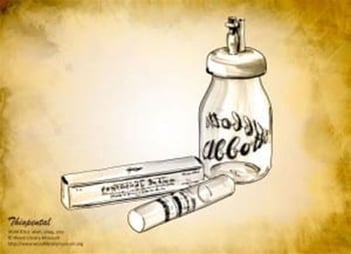 “Dr. Ralph M. Waters arrives at the University of Wisconsin, Madison. From there he will train his anesthesia residents (Waters' trainees were affectionately known as 'Aqualumni') in one of the world's 1st university-based residency training programs in anesthesiology. Waters also will pioneer carbon dioxide absorbing apparatus (To-and-Fro Canister), will clinically introduce intravenous sodium thiopental and inhalational anesthetic cyclopropane, and will become the ASA President in 1945.”
“Dr. Ralph M. Waters arrives at the University of Wisconsin, Madison. From there he will train his anesthesia residents (Waters' trainees were affectionately known as 'Aqualumni') in one of the world's 1st university-based residency training programs in anesthesiology. Waters also will pioneer carbon dioxide absorbing apparatus (To-and-Fro Canister), will clinically introduce intravenous sodium thiopental and inhalational anesthetic cyclopropane, and will become the ASA President in 1945.”
(Photo, inset right) THIOPENTAL: Became the first widely used intravenous anesthetic gas. Used primarily from late 1930s to 1950s. Photo: © Wood Library-Museum. www.WoodLibraryMuseum.org
1929
“The Anaesthetists' Travel Club is organized by Dr. John S. Lundy, who will popularize use of the intravenous anesthetic thiopental (Pentothal) and will become the ASA President in 1946. The popularity of thiopental-as a swift-onset intravenous agent for inducing general anesthesia-will pave the way for other totally unrelated intravenous induction agents, such as ketamine, etomidate, and propofol.”
1933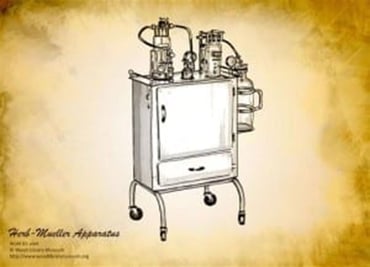
“To the NYSA (the future ASA), Dr. Paul M. Wood formally donates his personal collections, which form the basis of his future namesake, the Wood Library-Museum of Anesthesiology.”
(Photo, inset right) HERB MUELLER APPARATUS: Introduced in 1933, it administered ether & suctioned blood & mucous from surgical area & patient's airway. Photo: © Wood Library-Museum. www.WoodLibraryMuseum.org
1935
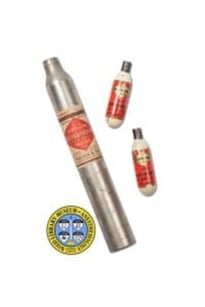 “Dr. Emery A. Rovenstine arrives at Bellevue Hospital in New York to establish a premiere residency there. Having co-pioneered in the 1930s the use of cyclopropane and punch-card databases of his anesthesia cases, he co-founds the American Board of Anesthesiology and New York's Postgraduate Assembly in Anesthesiology. He will serve as the 1943-1944 ASA President and will receive the ASA's Distinguished Service Award in 1957.”
“Dr. Emery A. Rovenstine arrives at Bellevue Hospital in New York to establish a premiere residency there. Having co-pioneered in the 1930s the use of cyclopropane and punch-card databases of his anesthesia cases, he co-founds the American Board of Anesthesiology and New York's Postgraduate Assembly in Anesthesiology. He will serve as the 1943-1944 ASA President and will receive the ASA's Distinguished Service Award in 1957.”
(Photo, right) CYCLOPROPANE: Became most widely used anesthetic gas starting in 1930s. Photo: © Wood Library-Museum. www.WoodLibraryMuseum.org
1936
“The New York Society of Anesthetists is renamed the American Society of Anesthetists. (The ASA's membership reaches 487 in 1936).”
1937
“Prof. Robert R. Macintosh-Appointed to the world's 1st endowed chair in Anaesthetics, Oxford's Nuffield Professor Macintosh would introduce his curved laryngoscope blade-the world's favorite-in 1943 and be knighted in 1955 for redesigning aviators' life jackets.”
1940
“Two years after forming as a subsidiary to the American Board of Surgery and the year after administering its first written examination, the American Board of Anesthesiology (ABA) is granted independent board status. The ABA helped define anesthesiology as a medical specialty and provided the American medical establishment with formal recognition of physicians specializing in the art and science of anesthesia. An ABA founder, Dr. Paul M. Wood also serves as Business Manager for Anesthesiology, the journal that the ASA begins publishing in July of 1940.”
1941
“Henry K. Beecher, MD- After his appointment to the USA's first endowed chair in anesthesiology as Harvard's Henry Isaiah Dorr Professor of Anesthesia Research, Prof. Beecher will pioneer understanding of medical ethics, patient consent, clinical trials, the placebo effect, and "brain death."
"Dr. Robert Hingson develops Continuous Caudal Anesthesia, an innovation in obstetrical anesthesia that provides continuous pain relief for prolonged or difficult labor. In 1958, Dr. Hingson starts Brother's Brother, a nonprofit charity for supplying medical, educational, and agricultural supplies worldwide. His needle-free 'Peace Guns' would mass-immunize millions by jet injection and would be featured as the 'Hypospray' in Star Trek and many science-fiction films."
1942
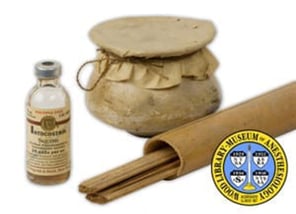 “Drs. Harold Griffith (1894-1985) and Enid Johnson (1909-2001). Squibb's Lewis H. Wright, MD supplied pharmaceutical grade curare to Drs. Griffith and Johnson for the world's 1st successful anesthetic use of the muscle relaxant. The curare had been received by Squibb in raw form in 1939 following Ecuadorean expeditions by Richard C. Gill (1901-1958).”
“Drs. Harold Griffith (1894-1985) and Enid Johnson (1909-2001). Squibb's Lewis H. Wright, MD supplied pharmaceutical grade curare to Drs. Griffith and Johnson for the world's 1st successful anesthetic use of the muscle relaxant. The curare had been received by Squibb in raw form in 1939 following Ecuadorean expeditions by Richard C. Gill (1901-1958).”
(Photo, inset right) CURARE: Originally used by indigenous South Americans. First used in 1942 by doctors to keep the body still during surgery for delicate operations. Photo: © Wood Library-Museum. www.WoodLibraryMuseum.org
1945
“After receiving the first Distinguished Service Award of the newly renamed American Society of Anesthesiologists, Wood Library-Museum Founder Paul M. Wood announced his plans for New York's 1st Post Graduate Assembly in Anesthesiology (PGA). (ASA membership reaches 1,977 in 1945.)”.
1953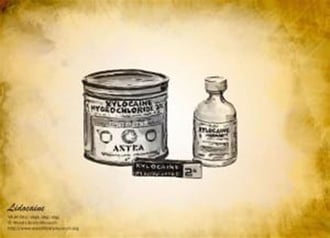
“Dr. Virginia Apgar (1909-1974)-Publishes now-universal APGAR Score to assess the health of newborns. She will direct the precursor to the March of Dimes and will be honored (1994) as the 1st female anesthesiologist to grace a U.S. postage stamp.”
(Photo, inset right) LIDOCAINE: Clinically introduced in Sweden by Torsten Gordh. M.D. as a local anesthetic. Proved to be longer lasting than others with lower risk of adverse effects. Photo: © Wood Library-Museum. www.WoodLibraryMuseum.org
1954
“Drs. Henry Beecher and Donald Todd publish "Deaths Associated with Anesthesia and Surgery," reporting their research findings on perioperative mortality.”
1955
“The World Federation of Societies of Anaesthesiologists (WFSA) was constituted at the first World Congress of Anaesthesiologists (WCA) in Scheveningen, the Netherlands in 1955.”
1956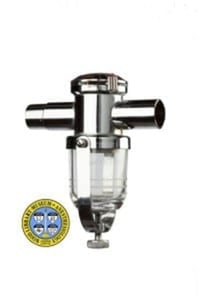
“The UK's Dr. Michael Johnstone clinically introduces halothane, the first modern-day brominated general anesthetic. The USA's first uses of halothane would follow by Drs. C. Ronald Stephen and then E. S. 'Rick' Siker, who would become the 1973 ASA President.”
(Photo, inset right) GOLDMAN VAPORIZER: U.K. physician Dr. Victor Goldman first introduces a small halothane vaporizer for dental use in 1956. A second model in 1962 allows for administration of deeper anesthesia for longer procedures. Photo: © Wood Library-Museum. www.WoodLibraryMuseum.org
1958
“John W. Severinghaus developed a complete gas apparatus by combining his practical version of Stow's CO2 electrode with Clark's pO2 electrode.”
1960
“Drs. Joseph Artusio, Alan van Poznak et al. begin human trials of the inhalational anesthetic methoxyflurane.”
1963
“Dr. Edmond I. Eger, II describes minimum alveolar concentration (MAC), later characterized as "the concentration [of inhaled anesthetic] producing immobility in 50% of patients subjected to a noxious stimulus.”
“Dr. Paul M. Wood passes away and his namesake Wood Library-Museum opens 6 months later in a two-story annex to the ASA's one-story headquarters on Busse Highway in Park Ridge, Illinois.’
1964
“Dr. Günter Corssen et al. begin human trials of the dissociative intravenous anesthetic ketamine.”
1966
“Dr. Robert Virtue et al. begin human trials of the inhalational anesthetic enflurane.”
1969
“The ASA launches the Self-Evaluation Program, the first in a series of educational initiatives for members. Renamed the Self-Education and Evaluation Program (SEE) by 1979, this initiative provides a self-assessment which practitioners could complete at their own convenience. SEE enables anesthesiologists to gain an objective measure of their professional knowledge and provides guidance for continuing education. By 2004, the Anesthesiology Continuing Education Program (ACE) was launched. ACE facilitates lifelong learning by allowing practitioners to assess their status of knowledge, identify any areas of improvement, and prepare for the written anesthesiology recertification examination.”
1970
“Dr. J. Antonio Aldrete publishes his Post Anesthetic Recovery Score."
1972
“Isoflurane is clinically introduced as an inhalational anesthetic.”
1985
“The Anesthesia Patient Safety Foundation (APSF) is founded by the ASA.”
1986
“The ASA approves the first medical standard-of-care for basic intraoperative monitoring. In subsequent years, the ASA promulgates evidence-based Practice Parameters and Standards, Guidelines, and Statements.”
(Photo, inset right) ISOFLURANE: Clinically introduced as an inhalational anesthetic in 1972. It is found to be safer & more effective than halothane. Isoflurane receives FDA approval in 1981. Photo: © Wood Library-Museum. www.WoodLibraryMuseum.org
1990
“The Overseas Anesthesia Teaching Program (OTP) is founded by Dr. Nicholas M. Greene. Later, the Global Humanitarian Outreach Program (GHO) encourages volunteerism, supports anesthesia education and training in low- and middle-income countries, advocates for long-term academic partnerships with hospitals and universities in countries of need, and collaborates with organizations, institutions, and initiatives with common missions and philosophies. In 2011, the ASA awards the first Nicholas M. Greene, M.D. Award for Outstanding Humanitarian Achievement."
1992
“Desflurane is clinically introduced as an inhalational anesthetic.”
1993
“The ASA publishes its first Difficult Airway Algorithm, specifying a safe and systematic approach to assisted ventilation in patients under general anesthesia.”
(Photo, inset right) OHMEDA TEC 6 VAPORIZER: 'Desflurane, an anesthetic introduced in 1991, required the development of a new kind of vaporizer. The manufacturer, Ohmeda, introduced the Tec 6 around 1993. Desflurane, an anesthetic introduced in 1991, had such a low boiling point that it required the development of a new kind of vaporizer. The manufacturer, Ohmeda, introduced the Tec 6 around 1993. Desflurane, an anesthetic introduced in 1991, had such a low boiling point that it required the development of a new kind of vaporizer. The manufacturer, Ohmeda, introduced the Tec 6 around 1993.' Photo: © Wood Library-Museum. www.WoodLibraryMuseum.org
1994
“Sevoflurane is clinically introduced as an inhalational anesthetic.”
“The ASA establishes an online presence for communication with members and the public. A website will coalesce into www.asahq.org.”
1999
“In its report To Err is Human, the Institute of Medicine lauds the efforts of anesthesiologists in improving patient safety.”
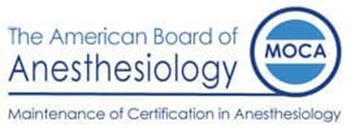
MAINTENANCE OF CERTIFICATION (MOCA): 'Begins for newly-minted Diplomates of the American Board of Anesthesiology (ABA).' Starting in 2000, Maintenance of Certification (MOCA) begins for newly-minted Diplomates of the American Board of Anesthesiology (ABA).' Photo: © Wood Library-Museum. www.WoodLibraryMuseum.org
2000-2012
“Starting in 2000, Maintenance of Certification (MOCA) begins for newly-minted Diplomates of the American Board of Anesthesiology (ABA). Over the next dozen years, individual ASA members and then a formal ASA committee work with the ABA to establish a Simulation Education Network (SEN) to assist in educating and certifying anesthesiologists in their medical specialty.”
2009
“The Anesthesia Quality Institute (AQI) is founded by the ASA.”
2011
“The ASA Charitable Foundation is established.”
2012
“Publication of The Heritage of Anesthesia: Patrick Sim's Annotated Bibliography of the Rare Book Collection of the Wood Library-Museum of Anesthesiology. From 1971-2010, Patrick Sim, MLS had worked as the sole and then the senior librarian at the ASA's Wood Library-Museum of Anesthesiology. (The ASA's membership reaches 50,023 in 2012).”
2013
“As its membership numbers pass 50,000, the ASA breaks ground for its Schaumburg, Illinois complex.”
2014
“The ASA moves into its new Schaumburg, Illinois complex.”
(Top photo) FIRST AMERICAN PROCEDURE USING ANESTHESIA: Illustration of dentist William T.G. Morton & surgeon John Warren giving anesthesia to patient Glenn Abbott at Boston’s Massachusetts General Hospital on October 16, 1846. Illustration: Wikimedia Commons
About UMHS:
Built in the tradition of the best US universities, the University of Medicine and Health Sciencesfocuses on individual student attention, maintaining small class sizes and recruiting high-quality faculty. We call this unique approach, “personalized medical education,” and it’s what has led to our unprecedented 96% student retention rate, and outstanding residency placements across the US and Canada. UMHS is challenging everything you thought you knew about Caribbean medical schools.
We would appreciate you checking out some of our other popular blog posts:
| What is a Pathologist? | Hospitalist - What is a hospitalist? | Brain Fog |
| Nontraditional medical students | Infectious disease doctor | DO vs MD |
 At-a-glance
At-a-glance
Free guide
Anesthesiology: Is it the right specialty for you?
- Scope of Practice
- Subspecialties
- Future Job Outlook
Quick access. No spam. 10 pages.

Scott is Director of Digital Content & Alumni Communications Liaison at UMHS and editor of the UMHS Endeavour blog. When he's not writing about UMHS students, faculty, events, public health, alumni and UMHS research, he writes and edits Broadway theater reviews for a website he publishes in New York City, StageZine.com.













